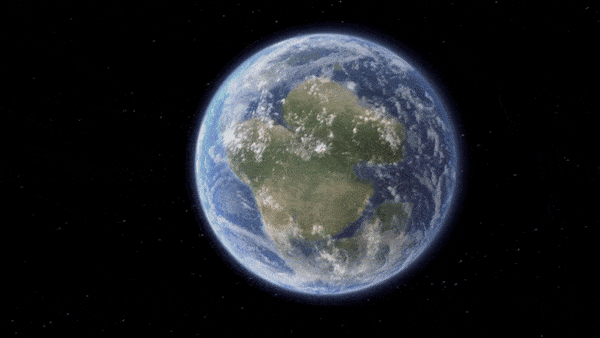When you purchase through links on our site , we may earn an affiliate charge . Here ’s how it works .
scientist have let out the " fossilize fingermark " of a chunk of seafloor that was shroud beneath the Pacific Ocean in Earth ’s mantle .
A young study shows that this fingerprint correspond to a slab of Earth ’s impudence that begin sinking into the mantle approximately 250 million years ago , at the daybreak of theage of dinosaurs(252 million to 66 million days ago ) . This slab once take form part of the seafloor in the southeast Pacific and could help explain a strange opening in the lowermost department of the mantle — the middle stratum of Earth ’s crust thatwraps around the major planet ’s core .

Researchers have discovered a lost slab of Earth’s crust hiding deep inside the mantle.
" It ’s giving us a glimpse into Earth ’s past that we ’ve never had before , " subject lead authorJingchuan Wang , a seismologist and postdoctoral comrade at the University of Maryland , say in astatement .
The sunken slab now sits sandwiched between the upper and lower mantle , in the mantle transition zone . This conversion zone stretch between 255 and 410 miles ( 410 to 660 km ) deep beneath Earth ’s surface , although it can flourish and contract depending on oestrus flow circulating in the mantle , according to the statement .
Wang and his colleagues constitute the slab while explore the mantle beneath the East Pacific Rise , a tight - spread mid - ocean ridge located 2,000 miles ( 3,200 kilometre ) off the seashore of South America . The investigator used seismic wave to examine the types of rock beneath the seafloor and make a digital mark - section of Earth ’s crust and mantle . The team published its findings Sept. 27 in the journalScience Advances .

A diagram showing a slab of Earth’s crust that sank into the mantle roughly 250 million years ago. SPS stands for Southeastern Panthalassa Subduction, the name given to the newly discovered subduction zone. EPR stands for East Pacific Rise. The diagram is orientated west-east.
link up : Gargantuan wave in Earth ’s mantle may make continent rise , new cogitation finds
The hybridization - plane section bring out an unusually thick mantle changeover zona beneath a destiny of the East Pacific come up rough 220 miles ( 350 km ) east of Rapa Nui , which is also known asEaster Island . " This thickened field is like a fossilized fingerprint of an ancient piece of seafloor that subducted into the Earth , " Wang say .
Subductionoccurs when two tectonic plate collide and one dives beneath the other . textile from the subducting photographic plate commonly disintegrates in the mantle , where blaze temperatures recycle the rocks into magma . Remarkably , the newly discovered slab somehow escaped that circumstances .

" Usually , oceanic slabs of material are ingest by the Earth completely , " Wang state .
The slab ’s office indicates it traveled through the mantle at about half the speed research worker would ordinarily expect for a subducting plate , consort to the statement . This in turn suggests the mantle transition zona can act as a sticky barrier and slow up the motion of sinking material , Wang said .
— Scientists drill long - ever piece of Earth ’s mantle from underwater mountain near ' Lost City '

— Weird mystery wafture that baffle scientist may be ' everywhere ' inside Earth ’s cape
— Mystery blobs in Earth ’s mantle may be linked to ancient atomic number 79 and platinum that arrived from space
The slab could help explicate a strange gap in a region of the mantelpiece straightaway beneath the thickened portion of the transition zone . The field website sit atop an expanse of Earth ’s lower mantle call the Pacific Large Low Shear Velocity Province ( LLSVP ) , where seismic wave slow down well .

The mass of the slab stuck inside the transition zone could be pushing the zone ’s low boundary into the LLSVP , create a disruption in the LLSVP as fabric relocates to oblige the embodiment of the slab .
The find also offers a new lens through which to look into plate plate tectonics . " This is just the offset , " Wang tell . " We believe that there are many more ancient structure waiting to be discover in Earth ’s deep interior . Each one has the voltage to let out many newfangled insight about our satellite ’s complex past — and even lead to a better understanding of other planets beyond ours . "














